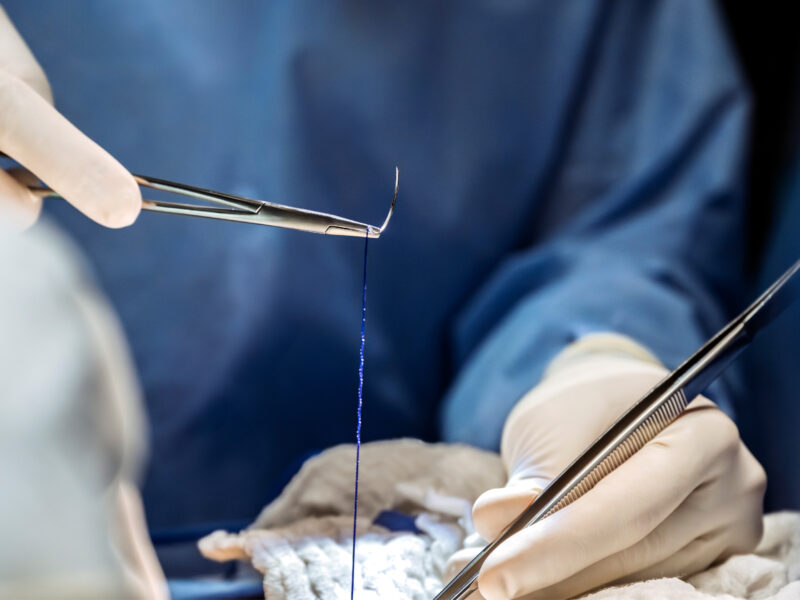Thinking About Care Pathways
Reducing demand on healthcare services is an important factor on the journey to net zero. Evidently, prevention plays a huge part in this. The NHS has a strong focus on prevention of illness and supporting patients to adopt healthy behaviours so they can live longer, healthier lives, reducing demand for treatment and care. Early detection of disease and empowerment of individuals to support self-management of conditions is another factor. However, what about patients in the system? Another consideration for reducing demand is by reducing the number of surgical complications.
Johnson and Johnson have been sharing the Care Pathway Approach to Sustainability with us. As one of our top 10 suppliers, the impact of their product portfolio is significant, but they are cognisant that industry needs to focus not solely on reducing its own carbon footprint, but also on collaborating with health systems including the NHS to improve health outcomes, maximise value and reduce environmental impact.

Data-Driven Approach to Sustainable Healthcare
It has been insightful to learn about J&J’s Care Pathway Approach and how they are assessing the environmental impact of pathways, particularly the environmental impact of Surgical complications. Using Sustainable Healthcare Coalition guidelines (of which they are a member), they conduct an environmental impact assessment – describing the typical steps involved in the diagnosis and treatment within a care pathway. Activity and emission data for each stage of the care pathway is used to calculate the climate, water and waste impact of a treatment or intervention.

Surgical procedure
Often the first part of the care pathway is a surgical procedure

Clinical impact and patient outcomes
Helping patients get back to an active lifestyle as soon as possible

Environmental impact
Less greenhouse gas emissions, water usage and waste

Economic impact
Shorter length of stay, fewer outpatient visits and journeys to hospital
Plus Antibacterial Sutures are an example of this in practice.
If we start with the basics of Sustainability; reduce, reuse, recycle, then looking at the Green Surgery Report 2023, it is the reduce aspect that has the biggest potential, although can be difficult to measure. See our Useful Links section to read the report.
In their environmental assessments, J&J have focused on how reducing the complication rates and number of procedures performed in surgical settings has the potential to result in reduced resource use. Surgical site infections (SSIs) represent around 20% of all hospital-acquired infections in surgical patients and are associated with prolonged hospital stay, admission to intensive care, and mortality1. J&J have conducted a systematic review (including reviewing clinical outcomes) with economic and environmental models to assess whether triclosan-coated sutures (Plus Sutures) provide benefits over non-coated sutures in the reduction of SSI risk2.
NICE Endorsement and Clinical Evidence
In 2021, NICE accepted a report presented by J&J which concluded that:
“…by preventing surgical site infections, using Plus Sutures results in potential environmental benefits to the NHS in England.” – NICE Medical Technologies Guidance, published on 28 June 2021, paragraph 3.6.
The potential environmental benefits correlate with the reduced length of stay and associated resource impacts of this.
“Plus Sutures is innovative because sutures are coated or impregnated with…a broad-spectrum antibacterial agent. It helps reduce biofilm formation and bacterial colonisation, preventing the growth of most common organisms associated with surgical site infection.”
“The additional costs of plus sutures compared to absorbable sutures (without the antibacterial agent) may be offset by capacity benefits arising from a reduction in hospital stay or any other costs avoided resulting from a reduction in surgical site infections.” – NICE 2021. Medical Technology Guidance: Plus Sutures for Preventing Surgical Site Infection.
The BMJ Surgery Plus publication has enabled J&J to share the results with the surgical community. To read the review paper on the economic and environmental benefits, see our Useful Links section to read Plus Sutures for Preventing SSIs.
The conclusions are that surgical complications are associated with substantial environmental impacts on the healthcare system. Reducing complication rates not only benefits patient outcomes, but it can also contribute to decarbonisation.
Collaborating Drives Real Results
J&J have published a case study in collaboration with Cheshire & Merseyside ICS, titled “Tackling Burden of SSIs with a more Environmentally Sustainable and Financially Efficient Approach”.
Using the models developed in conjunction with the NICE Guidance and the Sustainable Care Pathways Guidance, cost avoidance modelling and environmental impact analysis was conducted to understand the overall benefits of fully standardising the Plus Antibacterial Sutures across all 16 ICS member trusts.
The results showed that using Plus Sutures resulted in:
- 166 fewer SSIs
- £756,796 in cost savings
- Environmental savings of:
- 101 tCO2
- 147,878 m3 of water
- 11 tonnes of waste.
This clearly shows the clinical, economic, and environmental value that extends beyond the product.
What this demonstrates is that integrating environmental sustainability into value-based healthcare is a crucial step in creating a more holistic and sustainable healthcare system. These studies offer a robust methodological framework for evaluating the environmental footprint of healthcare processes within the care pathway.
Plus Sutures from J&J are available on the Wound Closure Framework Agreement, see our Downloads ▼ section, or please contact:
Customer Service Queries
References
1 Zabaglo, M., Leslie SW., Sharman, T. Postoperative Wound Infections. StatPearl. 2024.
2 Edwards M, Graziadio S, Shore J, et al. Plus Sutures for preventing surgical site infection: a systematic review of clinical outcomes with economic and environmental models. BMC Surg. 2023 Oct 3;23(1):300.
Links section
-
NHS Long Term Plan
View the NHS Ten Year Plan here.
-
Sustainable Care Pathways: Guidance on Appraising Sustainability (2015)
Read the guidance from Sustainable Healthcare Coalition here.
-
Green Surgery. Reducing the environmental impact of surgical care 2023.
Read the Green Surgery Report here.
-
©NICE 2021. Medical Technology Guidance: Plus Sutures for Preventing Surgical Site Infections.
Read the NICE guidance here.
-
Tackling Burden of SSIs with a more Environmentally Sustainable and Financially Efficient Approach
Read J&J's Case Study with Cheshire & Merseyside ICS here.
-
Plus Sutures for Preventing SSIs
Read the BMJ Surgery Plus publication here.
-
Wound Closure
The framework agreement for the supply of Wound Closure products.
-
Supplier Collaboration
A series of articles highlighting our efforts to work with key suppliers through the Supplier Relationship Management (SRM) programme.
